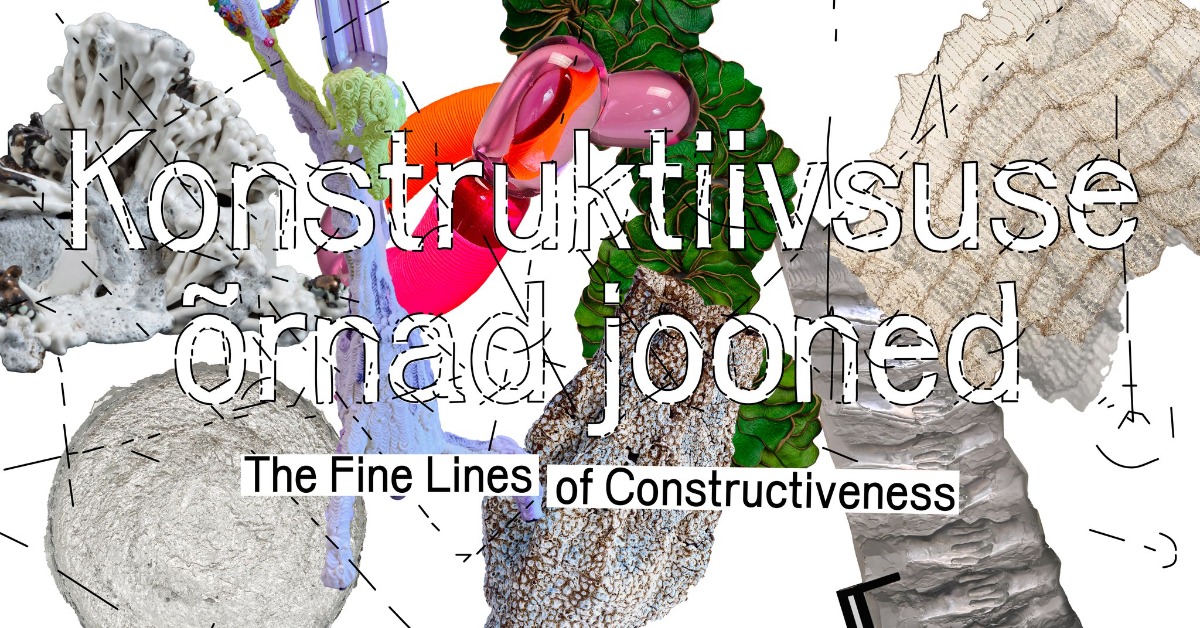
The Fine Lines of Constructiveness
The main exhibition of the 9th Tallinn Applied Art Triennial The Fine Lines of Constructiveness is on view at Kai Art Center until February 16, 2025
On Saturday, October 5th, the main exhibition of the 9th Tallinn Applied Art Triennial The Fine Lines of Constructiveness opened at Kai Art Center. This year’s triennial focuses on artists from the Baltic and Nordic countries, showcasing the diverse oeuvre of 27 solo artists and one artist group. The curator of the exhibition is glass artist Maret Sarapu.
“Constructiveness can be characterized by clarity, straightforwardness and optimality. It is aimed at development, creative progress, (re)constitution. Constructiveness may emerge when means are scarce, energy is low, or when the need to sustain one another has been acknowledged,” says the curator Maret Sarapu about the main theme of the triennial. “The artists exhibited at the triennial are interested in experimenting with new symbioses, finding new ways of usage, and there is clearly also a concern for sustainability – what happens to the material before and after the life span of the object,” commented Sarapu.
Many of the exhibited works use time-consuming technologies, which, in addition to highlighting the importance of sustainability, raise the question of whether handicraft as a soothing activity is a basic need, a luxury, or, paradoxically, both. The triennial includes textiles, glass, ceramics, jewelry, and installations – while many of the works are experimentations with a view of the future, they also value techniques from thousands of years ago. For example, the Swedish artist Karin Roy Andersson discloses how to sculpt pieces from reindeer skin while taking a responsible approach towards nature and animals without producing waste. Riikka Anttonen (Finland) emphasizes in the form of marble mosaic technique how queer history dates back much further in the past than people would like to acknowledge. Sofia Björkman (Sweden) has revived the therapeutic art of basket weaving, employing biodegradable materials. Vincent Dumay (Sweden) builds columns using the thousands of years old rammed-earth technique, while Hanne Haukom (Norway) uses similarly ancient craft techniques to create her vase-like forms.
The following artists are participating in the 9th Tallinn Applied Art Triennial: Karin Roy Andersson (Sweden), Riikka Anttonen (Finland), Ieva Baltrėnaitė-Markevičė (Lithuania), Sofia Björkman(Sweden), Per Brandstedt (Sweden), Vincent Dumay (Sweden), Signe Fensholt (Denmark), Ellisif Hals in collaboration with Yuvia Mainiand Cassius Lambert (Sweden/Norway), Hanne Haukom (Norway), Liisa Hietanen (Finland), Severija Inčirauskaitė-Kriaunevičienė (Lithuania), Kati Kerstna (Estonia), Lauri Kilusk (Estonia), Karel Koplimets (Estonia), Arja Kärkkäinen (Finland), Krista Leesi (Estonia), Alves Ludovico (Finland), Jennie McMillen (Sweden), Anda Munkevica (Latvia), Kadi Pajupuu (Estonia), Anu Penttinen (Finland), Tiina Puhkan (Estonia), Saara Renvall (Finland), Vilde Rudjord (Norway), Taavi Teevet (Estonia), Margit Terasmees (Estonia), Ketli Tiitsar (Estonia), and Linda Vilka (Latvia).
As in previous years, the triennial is accompanied by a satellite programme consisting of exhibitions, performances, installations and other events that link to the theme of this year’s triennial and highlight applied art and contemporary craft in a broader sense.